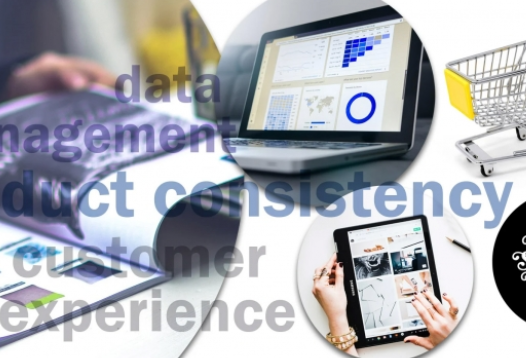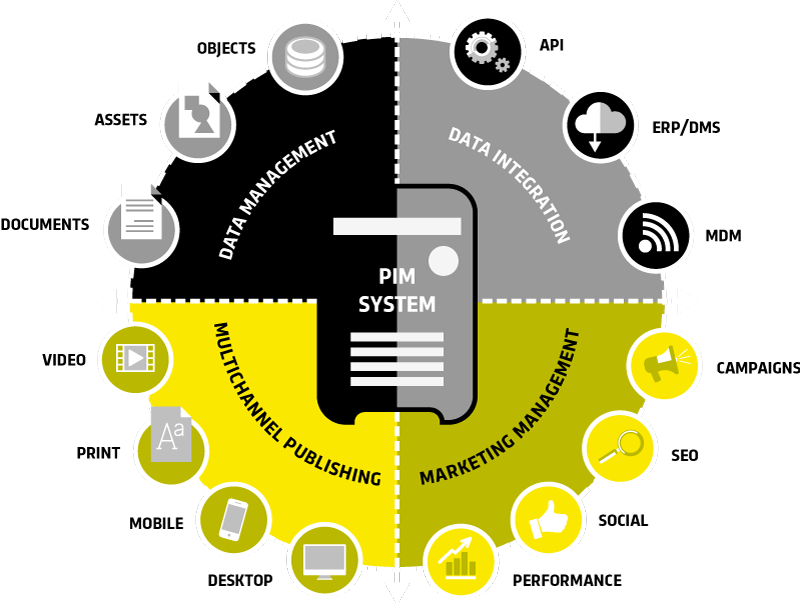Heading 3
Back in the not too distant past, running a retail business was fairly straightforward, right?
You worked out what you wanted to sell, gave yourself a name and found a bricks and mortar store. You sourced the stock, calculated the margins and attached the price tags. If you wanted to advertise your products, you’d pop an advert in the local gazette and wait for the customers to turn up and your products to fly off the shelves.
Things got trickier if you wanted to expand. One shop might become two, two might become 10. You’d get warehouse space to store your stock. You’d keep spreadsheets of all the stock and product information. Four times a year, you’d release a catalogue showcasing all of the latest products and prices. The brand’s teams would have weeks or even months to work on each one. Customers would flick through hundreds of pages and plan their purchase around the next trip to the store. Which, in many cases, could be weeks away.
In a digital world, customers are making decisions and purchases through an ever-increasing number of channels. Many don’t have time to spend flicking through a catalogue. They might not want to go to a physical store. If ordering online, they are likely to want their purchase to arrive the following day.
The physical store of the past is also now a website, mobile, app, social feed and more.
Data, personalisation and content are crucial. Like a revolving 24-hour news channel, having access to this information and using it properly means each online store is constantly changing and evolving every time a customer goes online so their experience is tailored around their individual preferences.
The hard-back catalogues of yesteryear have been replaced – or at the very least run parallel – with constantly moving digital catalogues made up of hundreds of thousands of digital assets. Photos of all sizes are needed to work in each format and channel. Video, product information, captions, content – often in many different languages – created and stored, ready to be used in seconds.
Being able to access, edit and use these quickly is essential, as is keeping the brand tone and messaging the same across all channels. All lead to better engagement, trust and help boost sales.
With so many teams often working on them simultaneously, their effective management can save thousands of hours of work and duplication of tasks throughout the business.
This is where a Product Information Management (PIM) solution comes into its own – and why it is now rightly regarded as the brains of the ecommerce operation.
Unfortunately, while relatively new in some organisations, it is still under-valued and under-utilised in others.
Here, Redbox takes a look at how your company could be using your PIM solution to better effect.
What is a PIM?
In an ever-evolving digital landscape, the ways brands are engaging with their audience are changing. Digital assets and product information are essential ingredients to this process. Without a PIM solution, marketing teams can become overwhelmed with the amount of data, spreadsheets and manual processes needed to keep on top of it all and plan effectively for the future.
A Product Information Management solution provides a process to collect, manage, edit and use all of the data, content and product information needed for marketing and sales channels.
While many businesses store all their product information in spreadsheets, PIM takes data management on to new levels, streamlining workflows and processes.
AI capability enables processes to be completed quickly and intuitively, while teams can work easily together and independently without wasting hours on repetitive processes.
 Why does my company need one?
Why does my company need one?
Any brand handling tens of thousands of digital assets and product information data will know the painstaking amount of time spent on collating, editing and storing this information.
PIM systems can help decrease manual workloads, help reduce errors, speed up processes, deliver consistent omni-channel product experiences, automate translations, automatically edit product information to fit different channels and create product catalogues for specific channels or occasions.
PIM solutions can collect data from sources including your ERP or the databases of suppliers, control the data quality and scale up as you grow.
Getting more from your PIM solution
Whether a PIM solution is new to your brand or something operating for a while, many brands are not utilising it to its potential.
Redbox partner Akeneo, provides PIM and product data intelligence solutions that improve data quality and accuracy while simplifying product information management.
Marketing manager Daisy Sorrell-Rhodes told Redbox that many brands are replicating its bricks and mortar customer experiences online by using a PIM more effectively.
She said: “Making seasonal changes in your product catalogue isn’t as simple as flipping the calendar to the next month. It means onboarding new products from manufacturers and suppliers, adding new photos and other digital assets, and updating hundreds or thousands of SKUs on multiple sales channels in time for the new season, all without succumbing to errors and inaccuracies in your product information. Add it all up, and adapting your product catalogue can be a monumental undertaking.
“Many of our retail customers are implementing a PIM in order to categorise their products according to sale or theme such as Black Friday, Christmas or Valentine’s Day. We can attest to this improving and even replacing the in-store customer experience that the UK was lacking during lockdown.
“Adapting your product catalogue for each new season can be a time-consuming and an error-prone process. Manually managing photos, videos, and other digital product assets can quickly become a nightmare, but getting products to market on time is critical to meet shoppers’ expectations.
“It means you need to rapidly update your assortment and take advantage of anything you can use to help your product managers take control of your product catalogue and adapt information on a timely basis.”
To get the best out of your PIM solution and for it to function effectively as the brains of your operation, your brand must use it properly.
Assign a team to manage your company workflow to understand how your PIM can be best applied to encourage better working practices throughout the business.
This can be a long and arduous task and one of the reasons some brands aren’t using their PIM solutions to their full potential.
Rather than under-utilise your PIM, the best functioning brands are changing their workflows and systems around the PIM, using it as the central hub from which everything else can flow.
Where are issues slowing productivity down? Which products are causing the repetition of tasks across the company? Where can the automated areas of the PIM take some of the strain? These are all questions that can be answered through analysing each teams’ workflows properly.
From here, you can develop a roadmap that provides a clear picture of how data is used in your company and what processes can be changed with your PIM solution at the heart of the strategy.
 What more can your PIM do?
What more can your PIM do?
- Enhance customer experience: better product descriptions and cross-channel consistency create trust
- Increase productivity: streamlining processes prevent repetition
- Better product catalogue management: allows companies to have much better control over their product catalogues and assets
- Accelerate time to market: content is up faster, but also sales products can go live quicker
- Automate processes: PIM tools and capabilities take hours out of many processes
- Offer bulk editing: Faster ways of working to save time in editing across all channels
- Help you manage product data and digital assets from one central point: encourages better team work across the company
- Easier to scale up business: Translation management and other tools make scaling up into other regions much more efficient
In conclusion
Product information management can be one of the toughest challenges for digital retailers to overcome. Today’s brands have huge amounts of data and information to managed, edit and organise efficiently.
There is not a one-size fit all approach to using your PIM solution to best effect, each business will have a different set of needs and will need to use the PIM tools at their disposal in different ways.
To get the most out of it, you must pick a team to manage the process and decide whether you are transferring the entire product catalogue and assets in one go to the new system, or take a more short-term project by project approach.
It is important to pick people for the team who already work with this data so they can understand the way they want it to flow.
Develop a road-map to provide a clear understanding of how the company’s data and information is used now and how it will be used moving forward.
The set-up of this team and the processes they set up could be some of the most important choices your company makes – they will determine your workflows and processes now and in the future.
It’s not called the brains of the e-commerce operation for nothing.
For more information on how you can better utilise your PIM solution, give Redbox a call.

 Why does my company need one?
Why does my company need one? What more can your PIM do?
What more can your PIM do?